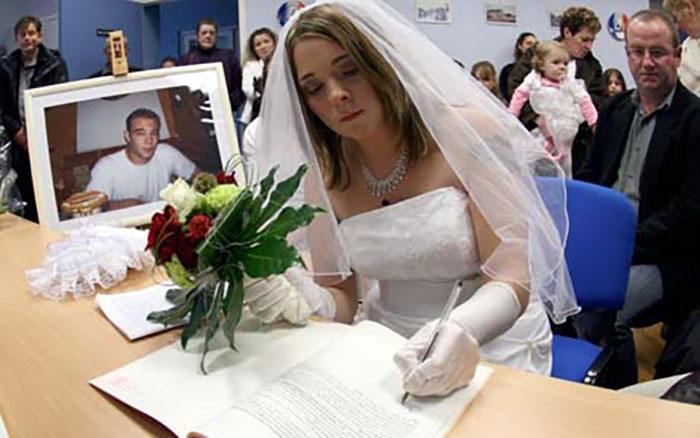Ghost Marriage – What I’m Reading XI
Have you ever heard of ghost marriage? If not, what’s your first guess about what it might mean?
All my adventures these days are taken in my arm chair, book in hand. I am currently reading Marriage, a History by Stephanie Coontz. The subtitle: From Obedience to Intimacy. Or How Love Conquered Marriage. It first came out in 2005.
Coontz, a historian, outlines the various forms of marriage from hunter-gatherer days to the present. All over the world. It is an absorbing, fascinating read!
To answer the question about ghost marriage. It really does refer to a living person marrying a dead person. It also goes by the names posthumous marriage and necrogamy.
I first heard about the practice in a New York Times article about a woman in France who married her dead boyfriend. That was back in 2004, and I recall around that time hearing debates about gay marriage. My immediate thought: “Gee, what’s the big deal problem with gay marriage? Both people are alive! The real challenge would be to have a living person marry a dead person.”
In fact, I was wrong. Coontz has made me realize ghost marriage is more common than I could have guessed.
Ghost Marriage: Past

Chinese funeral tablet
Coontz writes about traditional Chinese and Sudanese ghost (or spirit) marriages. In these societies a youth might be given to the dead son or daughter of another family. The purpose is to forge closer ties between the two sets of relatives.
For most of Chinese history, Coontz writes, it was the two sets of parents who arranged a ghost marriage. It was not necessarily the choice of the youth. But then in the early 20th century, some women actively sought such marriages. Why? To maintain economic independence while providing their families with the in-laws they wanted.
Apparently the female silk producers in the Canton delta pursued this path. They called it “marrying a tablet.”
These women later told historians that “it was not so easy to find an unmarried dead man to marry.” When one became available, they vied with one another “to be the one who would get to marry him” (Coontz, 27).
Ghost Marriage: Present
Back to France.
In 1959 a dam in southern France broke, inundating a town and causing hundreds of people to die. President Charles de Gaulle visited the town a week later, and a young woman pleaded with him to let her marry her fiancé who had drowned. A month later a new ghost marriage law came into existence. One which requires a request made to the President who then has it vetted for credibility – for such a law could be easily ripe for abuse.
The 2004 story involved a woman whose fiancé died in a motorcycle accident a week before the wedding. In that case, the wedding would surely have happened if he had not died. So the request to marry was granted. And her mother-in-law was happy that her new daughter-in-law could henceforth carry her deceased son’s name.
Then, too, law has practical benefits if, say, the bride-to-be is pregnant.
As I have learned more about ghost marriage I have came to understand it better. And instead of thinking it just plain weird, I now see it can serve a purpose.
Along the way I thought about the 1947 movie The Ghost and Mrs. Muir. I won’t detail the plot. But I will say that Mrs. Muir, a young widow, falls in love with a dead sea captain haunting her house on the coast of England.
The date strikes me as significant. The deadliest military conflict in history had just ended. With nearly 400,000 military dead in England alone, live men were not plentiful. Ghosts abounded.

The Ghost and Mrs. Muir
See also: What I’m Reading
Categorised in: Adventure, Blog, East Asia, What I'm Reading
This post was written by Julie Tetel Andresen
You may also like these stories:
- google+
- comment



